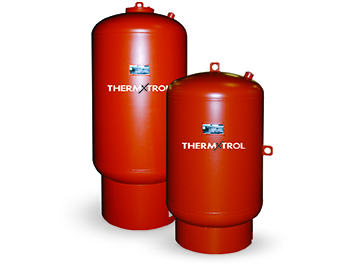Safe and Healthy Water Post Covid-19 Closures
Water is essential for life & health; however, water stagnation can be a major concern for shuttered buildings trying to reopen post COVID-19 closures.
Water left standing in a vacated building may result in the growth and spread of water-based pathogens such as fungi, Pseudomonas, Acinetobacter & Legionella among others within a buildings water pipe distribution system. Most city and state governments that have been subjected to mandatory or voluntary building closures due to the health crisis have published recommendations on disinfecting water supply lines before reopening & establishing a building water safety management plan.
We at Amtrol® support all state health agency recommendations to reestablish water health in the domestic water loop as well as those steps recommended by the CDC. The following steps and details are outlined in ASHRAE Guideline 12-2020 Managing the Risk of Legionellosis Associated with Building Water Systems. By establishing this guideline on March 30, 2020, the ASHRAE Standards Committee & Board of Directors responded decisively to create water based bacterial identification, disinfection, & clean water management:
- Drain hot water heater and storage tanks as recommended by the manufacturer.
- Perform a series of cold water & hot water system flushes starting with the cold at the nearest location to the municipal water source.
- Fill the system & flush (x) times. Commission water heaters(s) and bring stored water in heaters and tanks to 140-145F.
- Consult local state recommendations regarding applied disinfections added to the water distribution system. Including the recirculation loop(s) if present in the system.
- Maintain all cleanouts, disinfecting steps, water test results records in accordance to ASHRAE 188 & the new March 2020 ASHRAE Guideline 12-2020.
When water is heated, it expands. In a closed water system, that expanded water is contained in an expansion tank. In dormant systems, expansion tanks can become a breeding ground for dangerous & sometimes deadly bacteria.
- When a building closes without the water system drained beforehand and the water heater left on, the tank will hold constant expanded water that may provide a basis for bacteria growth.
- Every thermal expansion tank gas pressure charge must be field adjusted to match the system water static pressure. A tank whose pressure is not synchronized with the system pressure will hold extra or excess water. This is a common error during the water heater/expansion tank installation. This excess water could also become a base for bacteria creation. If a building closes without the water system drained but the water heater is turned off, the thermal expansion tank will not contain thermally expanded water but could still hold bacteria infected excess water.

Amtrol recommends replacing building expansion tanks with the only reliable anti-bacterial/Legionella expansion tank in the business, the Amtrol Therm-X-Trol® ASME diaphragm series expansion tanks. By replacing the buildings hot water heater thermal expansion tank with the Amtrol anti-Legionella tank, you can end the cycle of bacteria infection coming from stored or excess water volumes in the thermal expansion tank.
CDC research has determined that 66% of waterborne pathogens are Legionella. The health risk that Legionella represents has just been amplified by the necessary steps that building owners & facility managers have taken to suppress the spread of COVID-19 with business closures. Closure steps that may be taken again to flatten the spread curve, possibly sooner than later.
By making the change to a water healthy expansion tank, you are making an investment in the health & safety of the building’s occupants. Upgrade today to the Amtrol Therm-X-Trol diaphragm series ASME anti-Legionella thermal expansion tanks and make Legionella from your tank one less thing you need to worry about.

